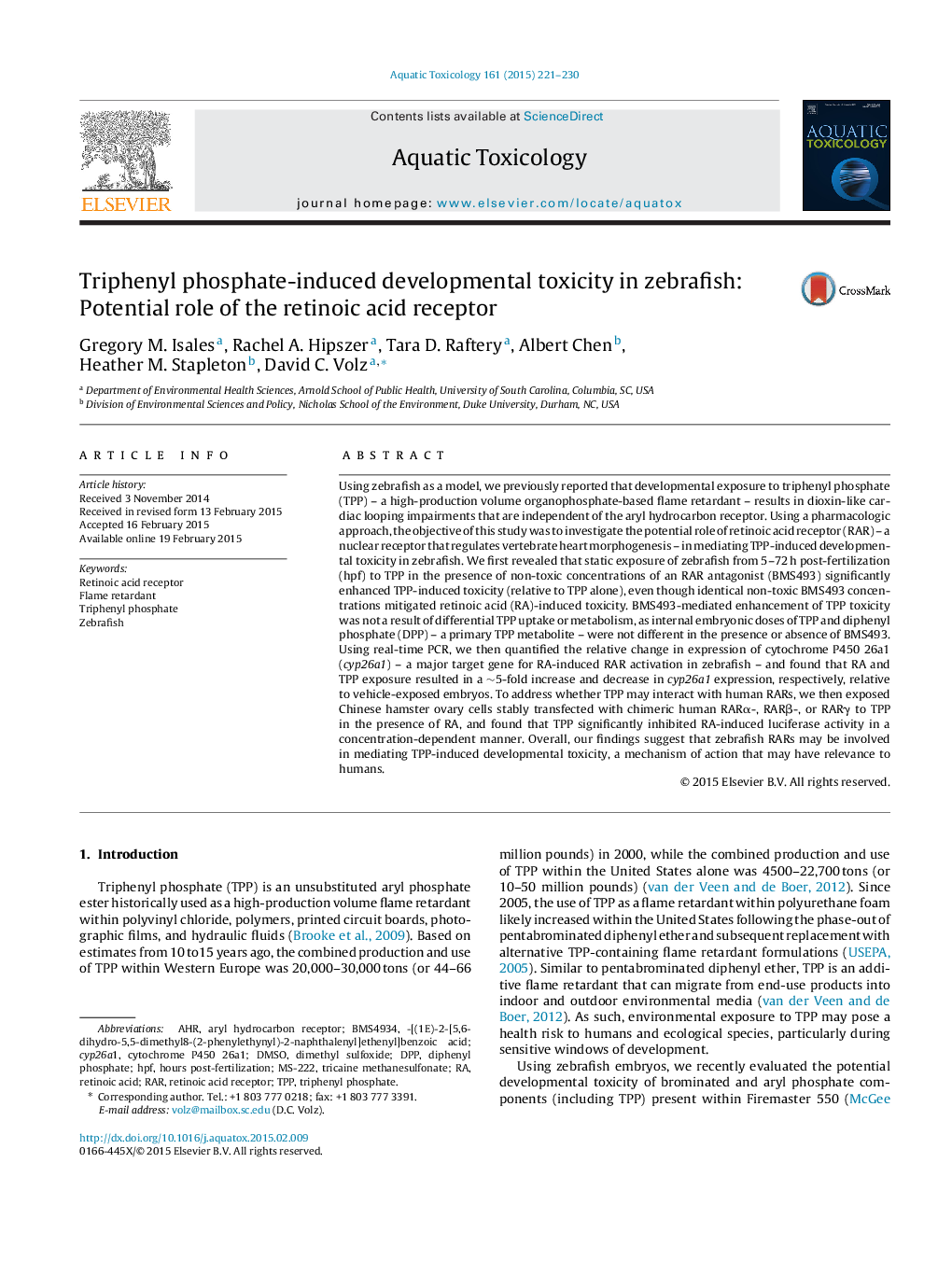| کد مقاله | کد نشریه | سال انتشار | مقاله انگلیسی | نسخه تمام متن |
|---|---|---|---|---|
| 6382221 | 1625944 | 2015 | 10 صفحه PDF | دانلود رایگان |
- Triphenyl phosphate-induced toxicity in zebrafish embryos is enhanced in the presence of a retinoic acid receptor antagonist.
- Triphenyl phosphate uptake or metabolism within zebrafish embryos is not altered in the presence of a retinoic acid receptor antagonist.
- Triphenyl phosphate decreases expression of cytochrome P450 26a1 in zebrafish embryos.
- Triphenyl phosphate inhibits retinoic acid-induced activation of human retinoic acid receptors.
Using zebrafish as a model, we previously reported that developmental exposure to triphenyl phosphate (TPP) - a high-production volume organophosphate-based flame retardant - results in dioxin-like cardiac looping impairments that are independent of the aryl hydrocarbon receptor. Using a pharmacologic approach, the objective of this study was to investigate the potential role of retinoic acid receptor (RAR) - a nuclear receptor that regulates vertebrate heart morphogenesis - in mediating TPP-induced developmental toxicity in zebrafish. We first revealed that static exposure of zebrafish from 5-72 h post-fertilization (hpf) to TPP in the presence of non-toxic concentrations of an RAR antagonist (BMS493) significantly enhanced TPP-induced toxicity (relative to TPP alone), even though identical non-toxic BMS493 concentrations mitigated retinoic acid (RA)-induced toxicity. BMS493-mediated enhancement of TPP toxicity was not a result of differential TPP uptake or metabolism, as internal embryonic doses of TPP and diphenyl phosphate (DPP) - a primary TPP metabolite - were not different in the presence or absence of BMS493. Using real-time PCR, we then quantified the relative change in expression of cytochrome P450 26a1 (cyp26a1) - a major target gene for RA-induced RAR activation in zebrafish - and found that RA and TPP exposure resulted in a â¼5-fold increase and decrease in cyp26a1 expression, respectively, relative to vehicle-exposed embryos. To address whether TPP may interact with human RARs, we then exposed Chinese hamster ovary cells stably transfected with chimeric human RARα-, RARβ-, or RARγ to TPP in the presence of RA, and found that TPP significantly inhibited RA-induced luciferase activity in a concentration-dependent manner. Overall, our findings suggest that zebrafish RARs may be involved in mediating TPP-induced developmental toxicity, a mechanism of action that may have relevance to humans.
Journal: Aquatic Toxicology - Volume 161, April 2015, Pages 221-230
